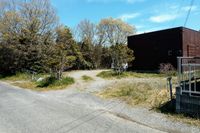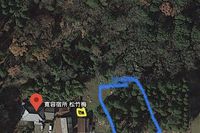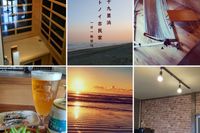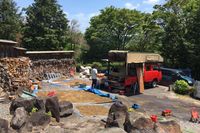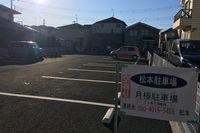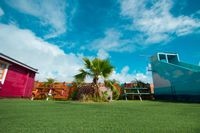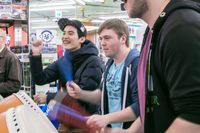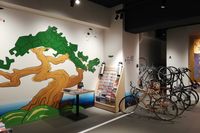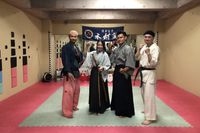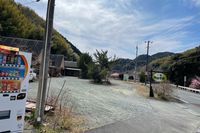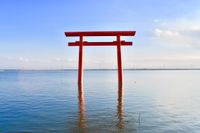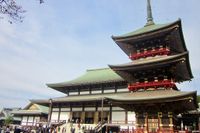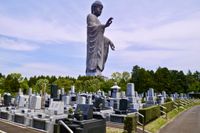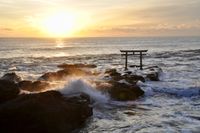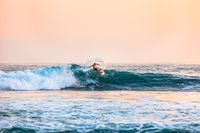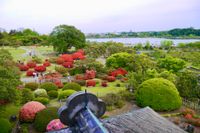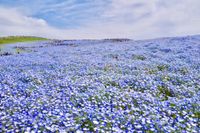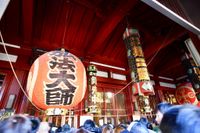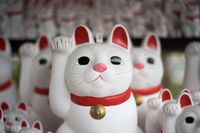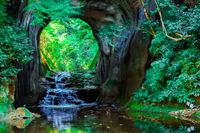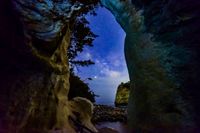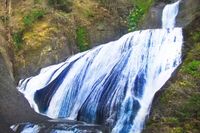Katori Jingu Shrine
千葉県/香取市

Description
It is a Shinto shrine that is said to have been built by the emperor of the first generation Jinmu around 650 BC. It is the main shrine of Katori Shrine group, of which there are 400 nationwide. The shrine God "Futsunushi no Kami" was revered as a warrior during the successive samurai regimes of Minamoto Yoritomo and Ashikaga Takauji, amongst others. Even these days, the shrine remains a place of worship and reverence for martial artists, and there are numerous cultural treasures here, such as the Kaijubudokyo, a sort of ancient medallion with imagery of marine creatures.
Homepage
Address
Nearby Car Night Spots
Vanlife BASE | 45 min. from Narita Airport / Perfect for campervan travel/A seaside town rich in nature/Japanese countryside town/welcome traveler
¥7,000〜
/ per nightChiba Koseki, Kujukuri-machi, Sambu-gun
5.0
(61)Kanyo Inn (first, second and third-class rooms options)
¥20,000〜
/ per nightChiba Ken Norocho, Chiba Shi Wakaba Ku
3.0
(0)Nearby Activities
Cycling in Shinjuku! From the tourist information center [INBOUND LEAGUE] which is in a good location and takes 20 minutes to Shinjuku Gyoen, Meiji Jingu and Yoyogi Park.
¥2,000〜
/ per personTokyo Shinjuku, Shijuku-ku
3.0
(0)Ranking Stations
(Bonfire BBQ) Chita Mihama Noma Beach Station
¥3,500〜
/ per nightAichi Noma, Mihamacho, Chita County
4.7
(42)Vanlife BASE | 45 min. from Narita Airport / Perfect for campervan travel/A seaside town rich in nature/Japanese countryside town/welcome traveler
¥7,000〜
/ per nightChiba Koseki, Kujukuri-machi, Sambu-gun
5.0
(61)Shin Meishin Suzuka PA (inbound) RV Station Suzuka * With Power!
¥2,200〜
/ per nightMie Yamamotocho, Suzuka-shi
4.3
(156)Nearby Drive Spots
Kashima Jingu Shrine
This is a Shinto shrine that is said to have been built by Emperor Jinmu of the around 660 BC. The deity of the shrine is Takemikazuchi(a thunder god), revered as a warrior during the successive samurai regimes such as Minamoto Yoritomo and Ashikaga Takauji. In addition to the "Futsunomitama no Tsurugi", a holy sword which is a designated cultural asset, it is a shrine full of other amazing sights, such as a torii gate that appears to float in the river, Mitarai pond, and around 30 deer in the park, which are said to be underlings of the Shrine God.
Naritasan Shinsho-ji Temple
This is a temple of the Shingon sect which was founded in 940 by Kancho. Naritasan opened as a place of worship and reverence to Fudo Myoo and with a wish to end the battle of Taira Masakado. Ichikawa family became named as the "Narita-ya" in 1688 after the prayers of Kabuki actor Ichikawa Danjuro were finally answered and he was blessed with a son. It is a temple full of sights and views, with a triple tower, a large tower of peace, and Naritasan Park itself.
Ushiku Daibutsu
This is a buddha statue of Jodo Shinshu Hongganji sect opened in 1989 by Otani Kosho. At 120 meters tall, it is the tallest buddha statue in Japan, and the third tallest in the world, as per the Guinness World Record. Inside on the 1st to 5th floors, there are several exhibitions about the history of Buddhism as well as interactive exhibitions. There is also an observation deck at the top. Visitors can experience the natural life around them with the seasonal flora and fauna in the surrounding area.
Oarai Isosaki Shrine
It is said that in 856 AD, a God appeared in front of Oarai and this temple was created. The temple contains Okuninushi(a main powerful god) as well as Sukunahiko(a secondary God). The Torii in the area are famous, and the area is known as an area where the Gods descend from heaven. The area is also a setting for the Anime "Girls und Panzer", and so is popular as a "pilgrimage" trip for fans of the anime.
Kujukuri Beach
This is a beach on the eastern Boso Peninsula. The total length is 66 kilometres. The name of "Kujukurihama" (99 Ri beach) is said to come from the fact that Minamoto Yoritomo ordered the length of the beach to be 99 "ri" (one ri being about 660m) and stuck 99 arrows in the sand. The area is now used as a regular beach by visitors, as well as for surfing and triathlons.
Kairakuen Garden
This is one of Japan's 3 most famous gardens, opened by Tokugawa Nariaki, of the Tokugawa clan, in 1842. He had a great love for the people and built it with the idea of people from all walks of life to have fun together. There are also around 3,000 plum trees of around 100 different varieties. Various festivals are held here throughout the year, such as the main plum festival in March, the cherry blossom festival in April, the Azalea festival in May, the Mito Komon festival in August, and the Hagi festival in September.
Hitachi Seaside Park
This is Japan's largest beachside park at 350 hectares - seven times the size of Tokyo Disneyland. April is the season of the daffodils and tulips, with May being the season of the baby blue eyes flower, in August, the "Rock in Japan festival" is held here, and the area is particularly busy in October, with the Bassia Scoparia herb season.
Kawasaki Daishi Heikenji Temple
This is a temple, which was built in 1128 by the Hirama Kanenori. The temple was a mainstay for the Shingon sect and founded by Kukai, a famous Japanese poet. During a historical pilgrimage known as the 88 places of Kanto, the temple was designated as a special sacred site, and the Tokugawa family visited here during the Edo period(1603-1868). Even now, a great many people visit this shrine for the "Hatsumoude" (new years temple visit)
Gotokuji Temple
This is a Soto sect temple built in 1480 by Kira Masatada. It is said to be the birth place of the "Maneki-Neko" (waving cat) where there is a legend that Ii Naosuke built a temple here when invited by a cat to escape from a great thunderstorm. The temple contains thousands of Maneki-Neko, and is the only temple where the cats are revered.
Kameiwa Cave
This is an unexplored stream area near Kimitsu City. The stream cave was created in the Edo era(1603-1868) to supply water to supply water to the paddy fields. The name comes from the fact that the rock formations look like turtles. When the sun rises in the morning, the light shines into the cave, making it a must see area in the early morning.
Takado Beach
This is an extremely scenic area with areas of natural beauty such as the blue of the water and the sea, the pine greenery extending along the cliff, the shining white sand of the beach with two small beach coves. The area has attracted numerous people of culture such as Yokoyama TaikanOkakura Tenshin and Nogushi Ujyo. The night starscape is also something to behold. ※高戸小浜海岸 © IKEMON750 クリエイティブコモンズライセンス(表示4.0 国際)https://creativecommons.org/licenses/by/4.0/
Fukuroda Falls
This is one of Japan's largest waterfalls in Ibaraki prefecture, boasting a height of 120m. A priest named Saigyo is said to have stated that "one cannot fully appreciate this waterfall unless you visit it in all four seasons", and it is for this reason that it is known as the "four time waterfall".



